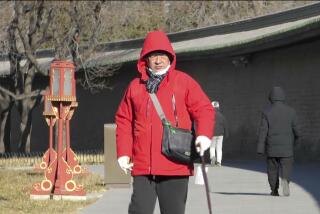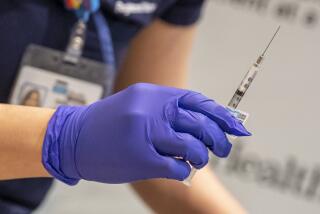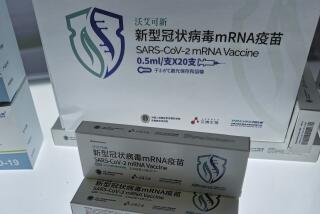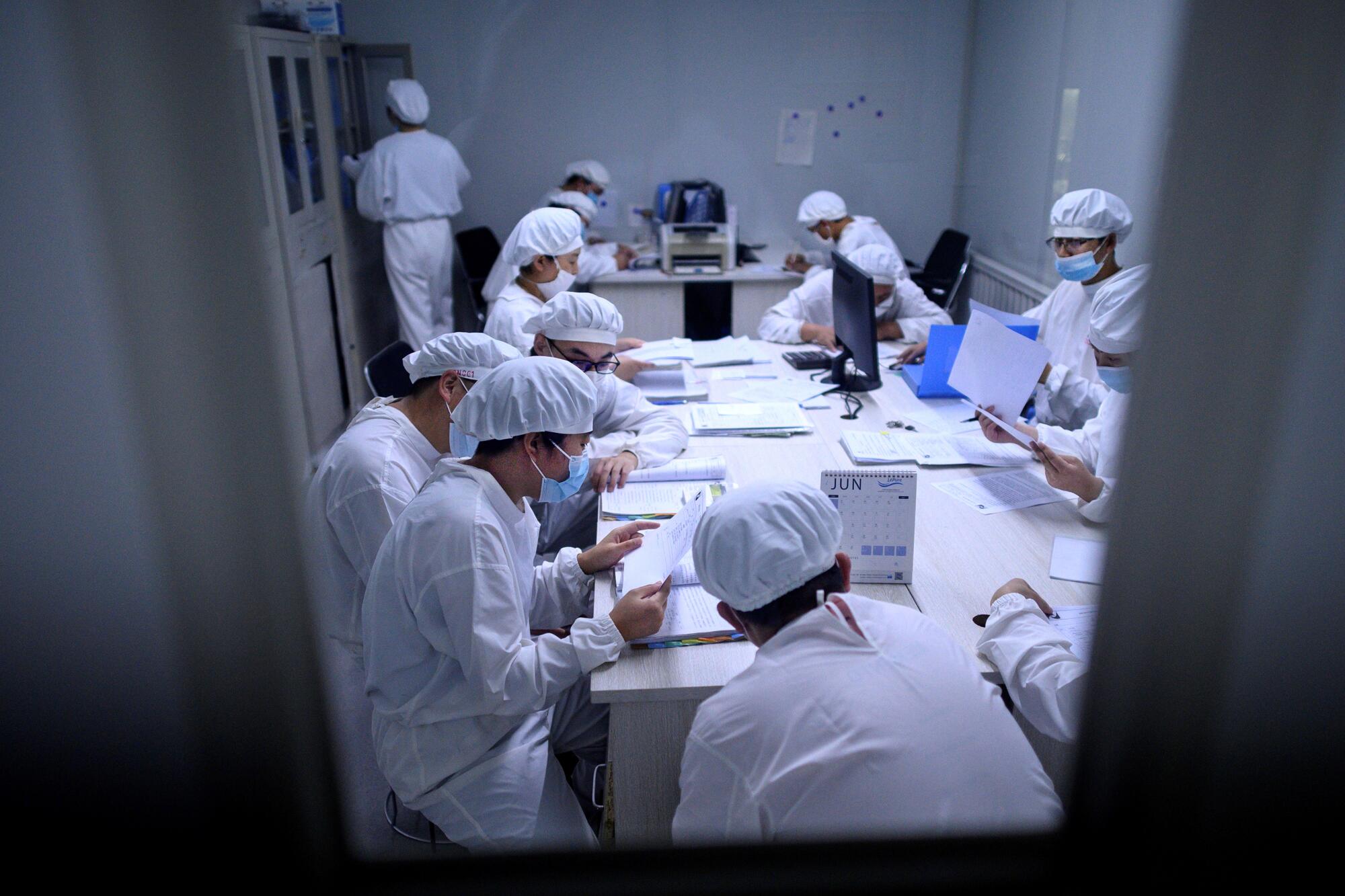
- Share via
BEIJING — They weren’t just vaccine volunteers. They were “revolutionary comrades in arms,” nearly 200 mostly young, brave souls putting their bodies on the line for China and for the world.
“I’m not afraid,” said Zhang Jing, a vaccine trial volunteer, as she and her husband, Zhao Wei, rolled up their sleeves to receive injections, according to a report in the Communist Party newspaper People’s Daily. Zhao worried that their child would be orphaned if they didn’t survive. But Zhang said: “I believe in the motherland.”
Such is the heroic narrative Beijing is promoting as China, having largely contained the coronavirus outbreak within its borders —
even though recent fears of a second wave in the capital prompted new restrictions — sets its sights on the ambitious goal of developing the first COVID-19 vaccine.
Just as the battle to beat the virus was framed as a “people’s war,” so too is the global race to create a vaccine portrayed as a patriotic effort, part of a decades-long goal to prove China is a scientifically advanced state.
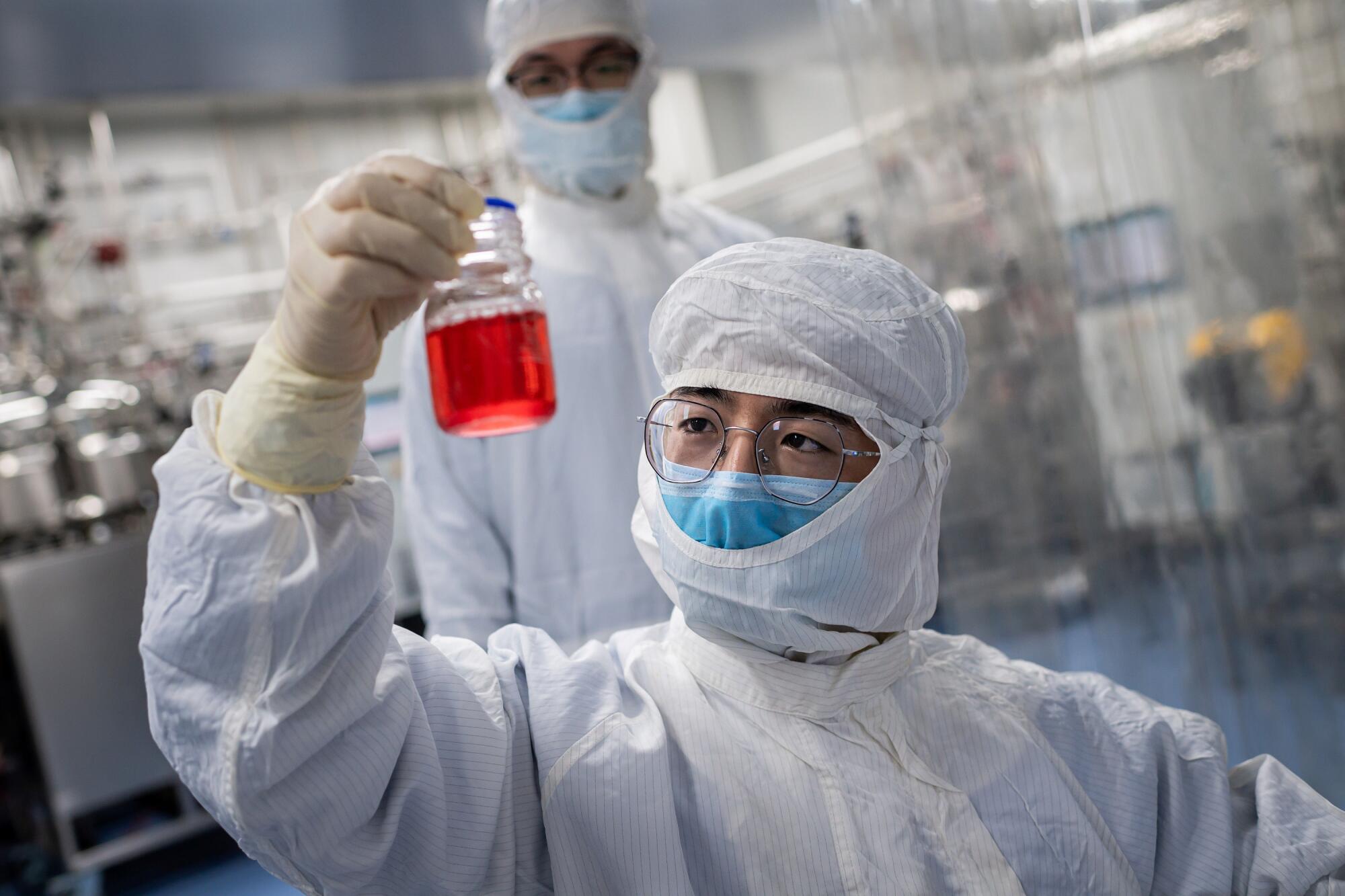
The quest for a vaccine is a chance to transform the country’s image, from the perceived source of the novel coronavirus to a savior that stemmed its spread. It is a crucial time — especially as the United States withdraws from its leading role in many international institutions — to persuade the Chinese people, struggling with economic crisis and mass unemployment, that theirs is still a powerful nation.
The pressure to win is entangled in global politics driven by Chinese leader Xi Jinping and President Trump — strong nationalists whose relations have become increasingly strained over the virus’ origins and its devastating impact across the planet.
“It’s almost a manhood type of competition between Trump and Xi Jinping,” said Lawrence Gostin, professor of global health law at Georgetown University and an advisor to the World Health Organization. “It’s a competition not just for health, but for national prestige, and for which system is a better system. So the stakes are extraordinarily high.”
More than 130 candidates for the vaccine are under development around the world, but only 10 of them have entered clinical trials, according to a recent update from the WHO. Half of those are Chinese.
“While scientists in China and abroad have kept up with mutual developments, China leads the world in the development of certain types of vaccines,” the State Council said in a white paper on China’s coronavirus response.
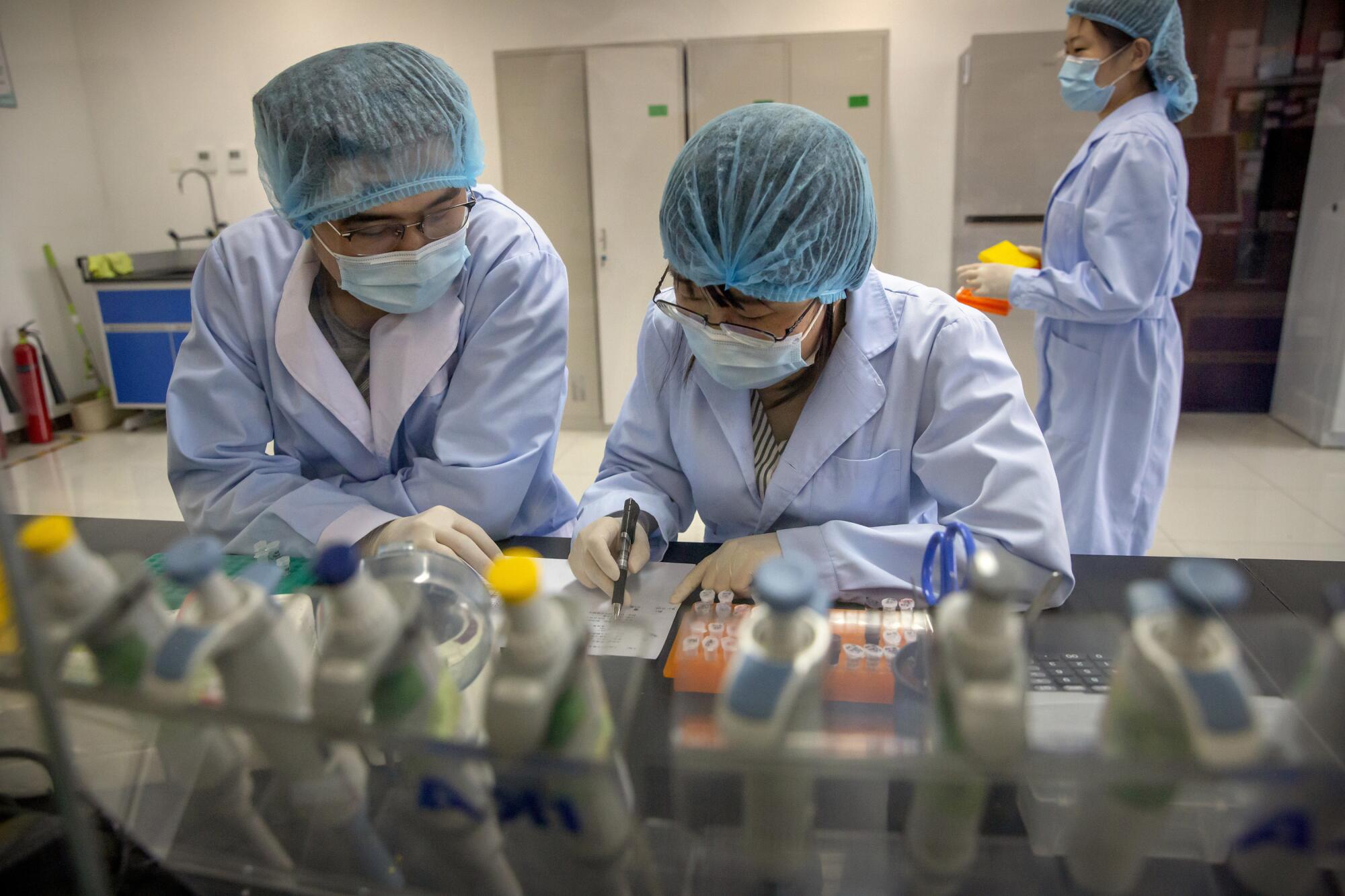
The highest-profile candidate is a vaccine developed by bio-pharmaceutical company CanSino Biologics in partnership with the Academy of Military Medical Sciences, which belongs to the Chinese military. The research team is led by an epidemiologist, virologist and major general named Chen Wei.
“A vaccine is the most powerful weapon to end the novel coronavirus,” said Chen, 54, in an interview on state TV in March. She often appears in the media wearing a military uniform and surgical mask and is called a “goddess” on Chinese social media.
“If China is the first to develop this weapon with its own intellectual property rights, it will demonstrate not only the progress of Chinese science and technology, but also our image as a major power,” she said.
CanSino is developing a virus vector vaccine, which uses a different virus to carry a piece of the coronavirus’ genetic material into the patient’s cells, teaching the patient’s body to recognize and react to it.
The results of CanSino’s Phase I trials were published in the medical journal Lancet last month. They found that the vaccine was mostly safe and produced an immune system reaction in all 108 trial members — a preliminary but inconclusive sign that it could be effective. The vaccine created adverse reactions, including fever and fatigue. The symptoms didn’t last long, and the drug passed Phase I safety requirements.
CanSino now has 500 people in Phase II trials. It recently signed an agreement to manufacture the vaccine and potentially continue clinical trials in Canada.
The other four Chinese candidates in clinical trials are working on a more traditional type of vaccine that uses a weakened or inactivated version of the coronavirus to trigger an immune response. One of those developers, Sinovac Biotech, signed an agreement last week to produce and test its vaccine in Brazil, where 9,000 volunteers have signed up for a Phase III trial in July.
Phase III trials typically require thousands of volunteers to be given the vaccine, then observed in a hot spot where the virus is still spreading. China has mostly suppressed the COVID-19 spread within its borders, which means it had no suitable domestic location for Phase III trials.
Brazil, which has nearly 980,000 infections, second only to the United States, could provide an ideal testing ground. In exchange, the Brazilian research partner, Instituto Butantan, will get to license the vaccine and ensure Brazilians’ access.
Another vaccine candidate by the University of Oxford and British-Swedish company AstraZeneca — supported by Operation Warp Speed, the Trump administration’s COVID-19 vaccine initiative — is also being tested on 2,000 volunteers in Brazil. An American vaccine candidate developed by Cambridge-based Moderna Inc. is, meanwhile, set to conduct Phase III trials on 30,000 people in the U.S. next month.
The incendiary rhetoric over the virus — Trump repeatedly blames China for the spread of the disease — is the latest turn in a new Cold War between Beijing and Washington. Comparisons of the vaccine race to a “Sputnik moment,” in which China and the U.S. vie for superiority, place pressure on scientists to lower safety standards for geopolitical interests, said Gostin, the advisor to the WHO.
“It is very dangerous to call it a race,” he said. “It’s playing with fire.”
But that is what it has become, with billions of dollars and prestige at stake across continents. China’s fast-tracking vaccine development has led to ramping up production capacity while allowing unconventional practices like combining the first two phases of clinical trials. Such moves can lead to safety risks.
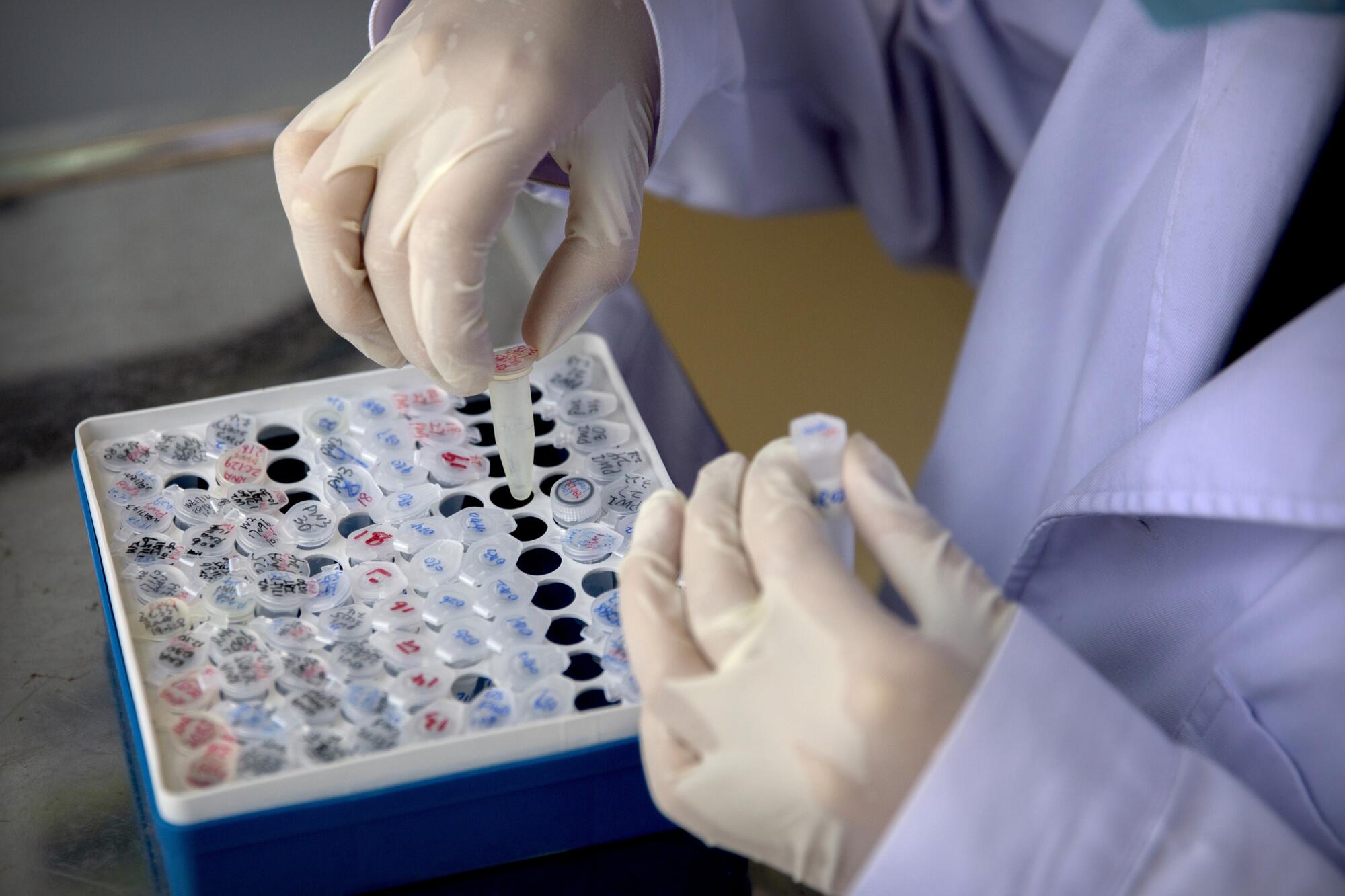
Vaccine developers in the United States and Europe are taking similar shortcuts —conducting human trials before animal trials have been completed, for example — despite scientists’ warnings against compromise of safety standards.
U.S.-China competition also hurts global efforts to coordinate vaccine development and ensure distribution goes to those who need it most. In past outbreaks such as H5N1 in 2007 and H1N1 in 2009, wealthy nations quickly bought up vaccines, leaving poorer countries empty-handed until much later.
Similar competition in the global scramble for personal protective equipment during the early stages of the coronavirus pandemic is a troubling indicator of what may unfold over a new vaccine.
The U.S., China or other wealthy nations could prioritize vaccinating their citizens — even when domestic outbreaks have been contained — while health workers and populations suffering mass outbreaks in poorer countries, notably in Africa, the Middle East and Southeast Asia, are blocked from access.
The WHO and other international organizations are working to prevent such a scenario and recently received $8.8 billion in global pledges for cooperative COVID-19 vaccine development. But beyond funding and rhetoric, the WHO needs commitments, especially from China and the U.S., to a needs-based distribution of vaccines.
“Not only is it the right thing to do, it is the fastest and smartest way to end the pandemic quickly,” said Kendall Hoyt, professor of medicine at Dartmouth University and author of a book on vaccine development.

Both Xi and Trump have made vague statements about sharing. Xi said at the World Health Assembly last month that Chinese-developed vaccines would be a “global public good,” accessible and affordable in developing countries. Trump said at a briefing in May that “we have no ego. Whoever gets it, we think it’s great.”
But neither country has made concrete commitments to needs-based distribution. The U.S. jeopardized a shared global approach recently when it withdrew from the WHO. China’s June white paper said the vaccine would be a global public product “once it is developed and deployed in China.”
The politics of a vaccine is just as complicated as the science. If China gets a vaccine first, the U.S. is unlikely to use it because of distrust in Chinese data, said Bonnie Glaser, director of the China Power Project at the Center for Strategic and International Studies.
“People would be skeptical and concerned about the safety and efficacy of a Chinese vaccine,” she said. Even within China, recurrent vaccine and food safety scandals have caused a crisis of public confidence in regulatory authorities, despite their endorsement by the WHO.
But other countries, especially those in the developing world, would probably be “just fine with it,” she said.
China already produces many vaccines for developing countries. They include more than 400 million doses of a Japanese encephalitis vaccine, for example, delivered to Laos and other nations with support from the Bill & Melinda Gates Foundation.
Sheng Ding, director of the Global Health Drug Discovery Institute — a joint initiative by Tsinghua University, the Gates Foundation, and the Beijing municipal government — said that several vaccines might be available by the end of 2020 or early 2021, at least for emergency use on high-risk groups such as front-line health workers.
Or there might be no successful vaccine at all, he said, despite all the racing.
“We really need to manage that hope. A vaccine is not the only option,” he said. Scientists are also working on drug treatments, neutralizing antibodies, better diagnostics and other tools to cope with the virus before anyone finds a vaccine.
Sheng is also working on a vaccine candidate not yet in clinical trials.
“There’s no guarantee,” he said, that it would work — or that any of the current vaccines would work. “But we just have to do it. Otherwise, we will not know.”
Times staff writer Don Lee in Washington contributed to this report.
More to Read
Sign up for Essential California
The most important California stories and recommendations in your inbox every morning.
You may occasionally receive promotional content from the Los Angeles Times.
